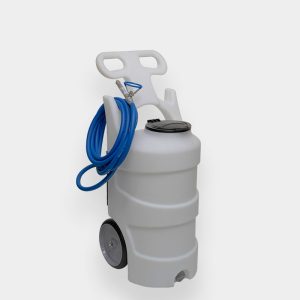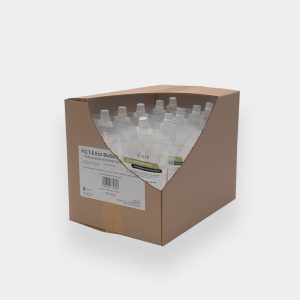Big Facts First
- Globally, energy demand for space cooling will increase 3x by 2050.
- Overall electricity consumption has more than doubled in the past 10 years in the UAE.
- 80 – 85% of a building’s energy usage is related to cooling systems in the UAE.
- The UAE is the world’s 5th highest country in energy consumption per capita.
Sources: Tabreed, PWC, Elsevier, IEA.
Albeit abstract, these numbers are staggering, but they highlight the urgent need to plan and implement corrective actions to reduce energy consumption in the running of HVAC systems. Related to these cooling systems, there is no one silver bullet to solve the complex issue of reducing energy usage in buildings. Certainly not in the UAE, with a fast-growing population and built-up area. On top, the region’s weather conditions are difficult and harsh, both in the context of managing thermal comfort and the maintenance of the assets. Yet, sustainability and environmental actions have become a top priority for both the government and many businesses in the country. And in recent times building occupants have become more critical and vocal about their IAQ expectations.
In buildings, many factors need to be considered by owners and operators to efficiently manage energy consumption, related to their cooling systems. Whilst managing tight maintenance budgets, strict prioritization of periodic maintenance is required to maximize asset performance and extend asset life.
Focusing on the elements that have a big impact on the building energy usage profile, maintaining HVAC units is imperative. Practically in use 24/7, and with their energy efficiencies in mind, it makes sense to examine the maintenance protocols currently in use and focus on continuous innovation in maintenance practices.
HVAC Maintenance Considerations
- Monitoring and predicting system performance
- Monitoring chilled water delta T
- Periodic HVAC filter cleaning and changes
- Periodic HVAC coil deep cleaning (especially FAHU & AHU)
Densely packed to increase the surface for optimal heat transfer, coils can be considered ‘mega’ filters. Often invisibly hidden, deep inside, these coils tend to easily accumulate fouling over time, leading to airflow obstructions and built up of biofilm and decreasing efficient heat transfer. (The latter has a negative knock-on effect on the chilled water delta T.) This fouling adversely impacts the HVAC system air supply, which is designed to deliver a specific amount of Tons Refrigeration (TR) to a space, ensuring thermal comfort and airflow levels that can be managed actively. Periodic Preventative Maintenance (PPM) is required to address both elements on an ongoing basis.
Measuring Coil Cleaning Results
The importance of incorporating regular coil cleaning in the overall maintenance schedule of HVAC systems is often discounted and seen as an unnecessary cost. However, its positive effect can easily be quantified and tracked, by taking two simple spot measurements, before and after the deep cleaning of the coil. Provided that the cleaning protocol allows for full penetration of the coil, the principle is to migrate any type of fouling out and break down biofilm and bacteria, residing deep inside the coil.
Pressure Differential: As coils foul, the pressure differential elevates. This metric is a very useful indicator that the unit needs to work ‘harder’ and use more energy to pull the air through the coil. (Note that there will always be a certain degree of resistance in the design.) After deep cleaning of the coil, the pressure differential drops, indicating that obstructions have been removed. When such coil penetrating cleaning protocols are executed properly, the initial average improvement in pressure drop can be as high as 40 – 45%, subsequently reducing the kWh usage significantly.
Supply Air Flow: Deep cleaning the coil increases the supply air flow of the unit, often restoring it close to its designed supply air specifications. Even when the unit is considered ‘old’, supply air flow improvements can be up-to 30 – 35% in restored TR.
Coil Deep Cleaning Delivers ROI
Several elements contribute to a clear return on deep cleaning coils.
- Direct energy savings by HVAC unit – these lower energy usage levels can be maintained by implementing frequent and periodic coil cleaning (PPM).
- Indirect energy savings via the chilled water supply – restoring heat transfer can positively affect the chilled water delta T, a big cost factor in the HVAC setup.
- Humidity control – running air velocity at an optimal speed through the coil helps in avoiding excessive (airflow obstructing) condensation in the coil.
- Thermal comfort and balancing – assuming that ducting is properly maintained, restoring airflow and heat transfer allows for all spaces to receive the same temperature, as intended.
- Replacement cost due to avoidable wear-and-tear – dirty coils lead to higher failure rates of mechanical parts, whereas poorly executed coil cleaning (high pressure washing & chemicals) permanently damages the coil’s integrity (corrosion & fins).
Why does this matter to you and your organization?
Cleaning coils is not just an internal financial maintenance cost consideration anymore. As environmental aspects are becoming more pressing, companies have an increasing responsibility in implementing and governing sustainable, innovative solutions and practices to deliver a positive contribution to our collective cooling cost challenge.
There are innovative product solutions available that every engineering team can implement today and start making a tangible and accretive impact on the company bottom line and the environment.
It all starts with the lungs of the building.



